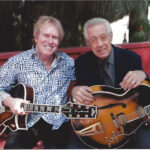Amplifiers have been a cornerstone of musical performance for nearly a century, but for a significant portion of that history, they were primarily associated with steel guitars and their electric counterparts. It wasn’t until the 1980s that the landscape began to shift, driven by the evolving demands of the modern concert scene. As folk and bluegrass artists moved into larger venues, the limitations of unamplified acoustic guitars became apparent – they simply couldn’t project their sound to reach the entire audience. This shift resonated across various musical genres, and today, for any acoustic guitarist performing in concert, an acoustic guitar amplifier is likely to be an indispensable piece of equipment.
However, it’s crucial to understand that an acoustic guitar amplifier operates on a fundamentally different principle than an amplifier designed for electric guitars. Electric guitar amps are often designed to shape and color the sound, sometimes drastically, adding distortion, overdrive, and a range of effects to create a unique sonic signature. In contrast, the core mission of an acoustic amp is to faithfully reproduce the natural, uncolored sound of your acoustic guitar. It acts as a transparent sound enhancer, working in harmony with your chosen pickups to amplify your instrument’s inherent tonal qualities without significantly altering them. While subtle tonal nuances can still be achieved – a tube-based acoustic amplifier will impart a touch of warmth, for example – the degree of sonic transformation is considerably less pronounced compared to electric guitar amplification. The focus remains on clarity and natural acoustic sound reproduction.
When selecting an acoustic combo guitar amplifier, one of the first and most practical considerations is power output. The wattage you need is directly tied to the size of the venues where you’ll be performing. For intimate settings like small coffee shops, practice rooms, or home studios, a lower wattage amp in the 10W to 50W range might suffice. However, for larger venues, clubs, or small concert halls, you’ll need more headroom and projection. In such cases, consider amps in the 60W to 100W range or even higher. For truly large concert halls and outdoor stages, powerful models reaching 200W to 300W or more may be necessary to ensure your acoustic guitar cuts through the mix and reaches the furthest corners of the venue. Always scale the power level of your acoustic amplifier to match the typical size of your performance spaces to achieve optimal sound projection and clarity.
Beyond wattage, the speaker configuration of your acoustic guitar amp plays a significant role in shaping your amplified tone. Larger woofers, typically 12 inches or 15 inches, are designed to reproduce lower frequencies more effectively, resulting in a more pronounced bass response. While this can be desirable for certain styles, it can sometimes lead to a boomy or muddy sound if not carefully controlled. If you’re aiming for a balanced and articulate acoustic tone that isn’t overly bass-heavy, consider an acoustic guitar amplifier equipped with multiple smaller speakers, such as two 8-inch or 10-inch speakers, or even configurations incorporating a 12-inch woofer paired with a tweeter. These multi-speaker designs often excel at delivering a crisp high-end punch and enhanced clarity, alongside ample volume for stage performance. Some sophisticated models even feature a carefully engineered assortment of different-sized speakers working in concert to optimize both bass and treble frequencies, resulting in a full, rounded, and sonically rich tone that captures the complete spectrum of your acoustic guitar’s sound.
In conclusion, an acoustic guitar combo amp is more than just a volume booster; it’s an essential tool for any acoustic guitarist who needs to project their instrument’s natural voice in a performance setting. These specialized amplifiers not only ensure that your guitar’s sound reaches every member of your audience, even in the back rows, but they also elevate your acoustic guitar’s presence to match the volume levels of other amplified instruments in a band. This balance is crucial – without an acoustic amplifier, your delicate acoustic tones can easily be overwhelmed and lost in the mix, especially alongside drums, electric guitars, or bass. Investing in a quality acoustic guitar amplifier is therefore a fundamental step for any serious acoustic guitarist looking to perform live and be heard clearly and authentically.

